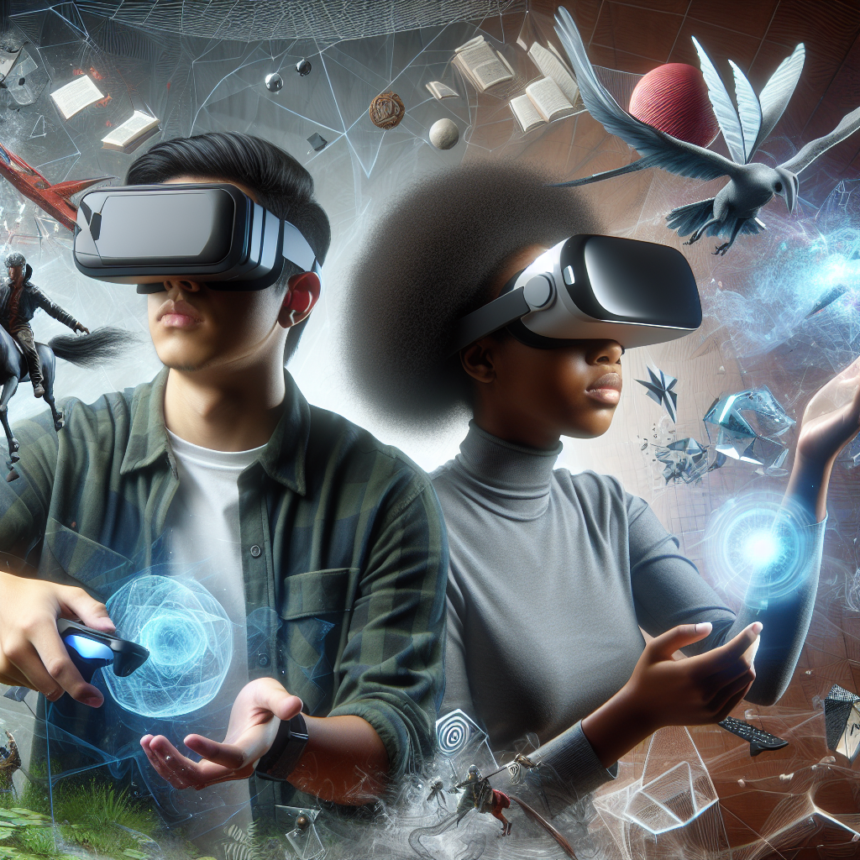The gaming industry has always been at the forefront of technological innovation, but the advent of Virtual Reality (VR) and Augmented Reality (AR) is revolutionizing the gaming experience like never before. These immersive technologies are not just adding a layer of depth to gameplay; they are fundamentally altering how gamers interact with their virtual worlds. In this article, we will explore how VR and AR are reshaping gaming and what this means for players as well as the industry as a whole.
The Rise of Virtual Reality in Gaming
Virtual Reality plunges players into fully immersive digital environments, allowing them to experience games in a first-person perspective that traditional gaming cannot offer. Using VR headsets like the Oculus Quest, HTC Vive, and PlayStation VR, gamers can explore intricate 3D worlds, engage in realistic combat scenarios, and socialize with other players as if they were physically present.
Immersive Gameplay
One of the standout features of VR is its ability to create a sense of presence. When wearing a VR headset, players listen to immersive soundscapes, perform realistic movements, and engage with their environments in ways that traditional consoles simply can’t match. Think of the adrenaline rush when you dodge enemy fire in a shooter or swing a sword in an epic battle; these experiences become intensely engaging and memorable.
Real-World Interaction and Fitness
Many VR games also incorporate physical movements, allowing players to engage in workouts that can range from casual dancing to high-intensity boxing. This not only enhances the gaming experience but also offers a fun way to stay fit. The virtual space can simulate various environments, driving players to move around actively, thus blending gaming with fitness in an innovative way.
Augmented Reality: Gaming Beyond Screens
While VR immerses players in a completely digital world, Augmented Reality enhances the real world by overlaying digital content onto it. AR games, such as "Pokémon Go" and "Harry Potter: Wizards Unite," have captivated millions by allowing them to interact with virtual elements integrated into their everyday environments.
Harnessing the Power of Location
One of the most significant advantages of AR is its ability to harness real-world locations for gameplay. Players are encouraged to explore their own neighborhoods and communities, turning their surroundings into a dynamic gaming experience. This social aspect of AR gaming pushes players to work together or compete, facilitating a sense of community and shared adventure.
Educational Implications
Beyond entertainment, AR has potential educational benefits. For instance, educational games can allow students to interact with historical figures or explore the human body, transforming passive learning into an engaging, hands-on experience. Such applications make learning more relatable and exciting for students of all ages.
The Future of Gaming: Integration of VR and AR
The future of gaming likely lies in the seamless integration of VR and AR technologies. As hardware becomes more advanced and accessible, developers are increasingly experimenting with hybrid experiences that allow players to transition between the two. Imagine playing a fantasy RPG where you can don a VR headset at home and then step into an AR mode when you venture outside, seamlessly connecting your gameplay to the real world.
Challenges and Considerations
While the potential of VR and AR is immense, there are challenges. For one, both technologies require significant investments in hardware, which might be a barrier for casual gamers. Additionally, issues like motion sickness in VR and privacy concerns in AR are crucial aspects that developers must address for wider acceptance.
Conclusion
In conclusion, VR and AR are not just gimmicks; they represent a quantum leap in how we experience games. By injecting life into gaming with immersive visuals and interactions, these technologies are elevating entertainment to new heights. As they continue to evolve, they promise even more innovation and excitement for gamers around the globe.
Frequently Asked Questions (FAQs)
1. What is the difference between VR and AR?
VR (Virtual Reality) immerses you in a completely digital environment, while AR (Augmented Reality) overlays digital information onto the real-world environment.
2. Do I need expensive equipment to play VR games?
While some high-end VR systems require significant investment, there are accessible options like the Oculus Quest that provide a standalone VR experience without needing additional hardware.
3. Can AR games be played on mobile devices?
Yes, many AR games, including popular titles like "Pokémon Go," can be played on smartphones, making them easily accessible to a broad audience.
4. Will VR and AR replace traditional gaming?
It’s unlikely. Traditional gaming will remain popular as VR and AR provide additional layers of experience rather than completely replacing the existing formats.
5. What is the future potential of VR and AR in gaming?
As technology advances, we can expect even more immersive experiences, the blending of virtual and real worlds, and possibly even new genres of gameplay that have yet to be imagined.











